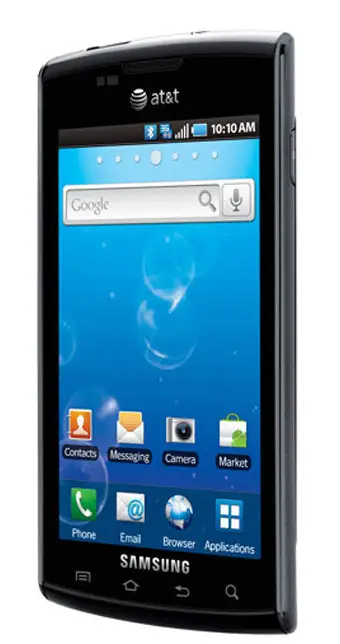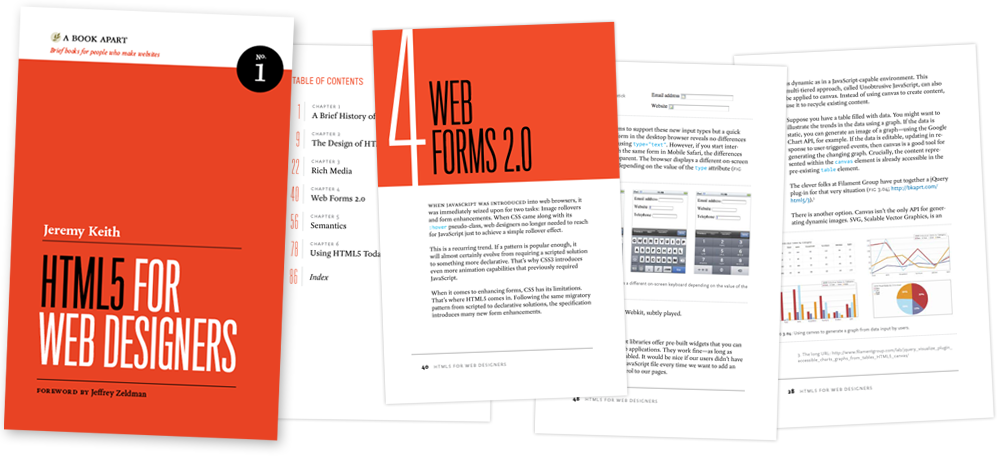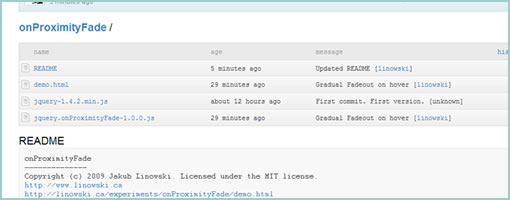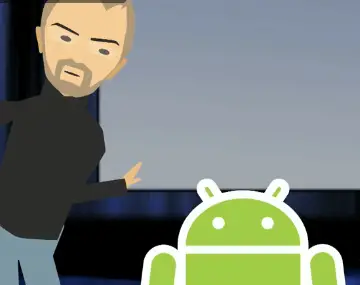 The clinic is busy as ever with more HTML5 ailments. This week, we’ll show you how (and whether) to store a
The clinic is busy as ever with more HTML5 ailments. This week, we’ll show you how (and whether) to store a <canvas> on the server, whether to use <progress> or <meter>, more on <header>, the placeholder attribute, and HTML5 minification.
Getting info from a canvas to the server
Stephen asked:
I want to use a canvas element as a layout plan and allow people to move things about and the like but I then want to be able to submit the changed layout to the server so it can be kept not just as a bitmap but as the various current layout of the plan. Is this possible?
You could call canvas.toDataURL() and store this output on the server. (Note that canvas is the DOM node and not the 2D context.) This will store the current state of your canvas, but it’s effectively a bitmap at this point. If you want to store the element for later editing, I’d suggest you use SVG instead. You can achieve the same graphical effect, but you’ll have access to the actual vector data since it’s XML.
Hope that helps,
Remy
Progress or meter?
Pierre asked:
Hello doctor,
I’m beginning with HTML5. I just wonder if I’m using the progress and meter elements correctly. Just imagine a player. Is it correct to use: the progress element to specify a load bar; the meter element to specify the volume set.
Thank you Doctor, have a good day.

<progress> is spot on for a loading bar, yes.
<meter> is read only, however, so it’s not appropriate for a volume control. There are some examples in Tom’s article on <meter>. To create a volume control, you could use one of the new input types specified in HTML5, perhaps <input type="range">.
Cheers,
Rich
Headers
Brad asked:
Having read you can use the header tag within almost any other element, is it fair to say you no longer “design” the header but simply design the elements in each header? How does that work? Would you use header classes?
In the past you define your header with an image or text etc. You can no longer do that if you use multiple headers?
The <header> element should be used if you have any related information within the “header” of that section that needs to be grouped. This means, for example, it isn’t necessary to wrap a lone <h1> in a <header> element. Also remember that the header doesn’t have to appear at the top of a section of page.
Our articles on the <header> element and <hgroup> element explain this some more.
Whether you need to use classes depends on your site.
Ta,
Rich
The placeholder attribute
José asked:
I recall once having seen text inputs that had tips inside them. They didn’t need Javascript in order to manage those tips. Would you consider discussing that a little better? That’d be great! Thanks!
We’re publishing an article on forms shortly, so be sure to look out for it.
Meanwhile, you’re looking for the placeholder attribute. Currently, this is supported only on Webkit browsers, although Mozilla is also working on it. You can use placeholder like this:
<input placeholder="Search" title="Type your search here" ...>We’ve also written a JavaScript solution using feature detection (i.e., it will check whether the browser supports placeholder and adds support if not). Just add this script to the end of your markup (note that it should be the end since it needs to run once the DOM is ready).
Hope that helps,
Bruce & Remy
HTML5 Minified
Grant asked:
Hello! Big fan of your website. I wanted to know about the so called “HTML Minified” feature that allows you to strip the
html,headandbodytags from your page.
The W3C Validator Conformance Checker for HTML5 says this is valid, but the Conformance Checker is beta and is supposedly unreliable. I haven’t heard from anywhere else that stripping these tags is a feature.
So is it really a feature? Or just a bug (A BIG one at that) in the experimental validator? I know that it works, but I would like to see any confirmation other than the validator that this is in fact an intended standard before I start using it on my websites. Thanks!
According to the spec, it is now explicitly permitted to omit all kinds of elements, including the ones you mention. Browsers are able to deduce the document structure based on context (e.g., some elements are only allowed within a <body> element) and will fix the DOM as they go. In fact, these have always been optional tags in HTML (but not XHTML).
Browsers are so good at this, though, because they’ve had to deal with the pants code out there on the interwebs. Going this route means you’re relying on browser error handling to render your document (although said error handling has admittedly been standardised in HTML5). I personally see it as a more extreme version of quoting element attributes. Of course you don’t have to, but being strict makes errors much easier to find, helps out parsers that may not be as sophisticated as a full-fledged browser (like text editor syntax highlighting), and makes it easier for beginners and veterans alike to learn and use HTML.
In general, machines understand you better when you’re explicit, so I’d advise against omitting these elements.
For more detailed articles on HTML5 minification, check out Remy’s HTML5 Boilerplates and Bruce’s A minimal HTML5 document.
Peace,
Oli
Got a question for us?
That wraps up this round of questions. If you’ve got a query about the HTML5 spec or how to implement it, you can get in touch with us and we’ll do our best to help.
Related Posts:
Your Questions Answered #11 originally appeared on HTML5 Doctor on July 30, 2010.

 Google seem to be reaching a turning point. Their share price has gone down lately, but there's no real problems within Google - it's the world outside that's changing. Bing is chipping away a little but Google is still the main search engine and at the centre of their business. The Android OS brings in very little cash for Google in comparison, with the OS being dished out free in an effort to get more people using Google services and thus click on Google ads. Google are finding that people don't search as much now, with people instead asking questions on Facebook or Twitter, and advertisers realising that perhaps Facebook is a better place to advertise.
Google seem to be reaching a turning point. Their share price has gone down lately, but there's no real problems within Google - it's the world outside that's changing. Bing is chipping away a little but Google is still the main search engine and at the centre of their business. The Android OS brings in very little cash for Google in comparison, with the OS being dished out free in an effort to get more people using Google services and thus click on Google ads. Google are finding that people don't search as much now, with people instead asking questions on Facebook or Twitter, and advertisers realising that perhaps Facebook is a better place to advertise.





 HTML5 for Web Designers Book —
HTML5 for Web Designers Book — 


 Now that location-based check-ins have more than proved their usefulness, LBS providers are coming up with new ways to expand the concept. One such provider, Booyah, has done just that by
Now that location-based check-ins have more than proved their usefulness, LBS providers are coming up with new ways to expand the concept. One such provider, Booyah, has done just that by 









 With opening weekend box office receipts of $62.8 million, it’s clear that the film “Inception” appeals to a broad audience, but Silicon Valley in particular is burning with love for this movie. And I can see why: I loved Inception because I am a geek and a techie at heart. Why does being a geek mean that this movie appeals to me? True to the spirit of the movie, let me address that question on multiple levels. (Don’t worry — I’ll try to do this in a way that doesn’t have too many spoilers).
With opening weekend box office receipts of $62.8 million, it’s clear that the film “Inception” appeals to a broad audience, but Silicon Valley in particular is burning with love for this movie. And I can see why: I loved Inception because I am a geek and a techie at heart. Why does being a geek mean that this movie appeals to me? True to the spirit of the movie, let me address that question on multiple levels. (Don’t worry — I’ll try to do this in a way that doesn’t have too many spoilers). Fourth, this team of hackers creates designer dreams, defining elaborate settings and choreographing action so that the “players” end up doing things according to plan – well, at least most of the time. Many critics have put down the movie because the dreams are neat and orderly, not messy and chaotic — but that’s the point, these are geek dreams, carefully programmed in advance, like a video game. In fact, these aren’t even really dreams; they’re artificial constructs that have clear rules and complex labyrinths that must be explored in order to progress.
Fourth, this team of hackers creates designer dreams, defining elaborate settings and choreographing action so that the “players” end up doing things according to plan – well, at least most of the time. Many critics have put down the movie because the dreams are neat and orderly, not messy and chaotic — but that’s the point, these are geek dreams, carefully programmed in advance, like a video game. In fact, these aren’t even really dreams; they’re artificial constructs that have clear rules and complex labyrinths that must be explored in order to progress. Sixth, we have a doomed love story. Cobb spends a good part of the movie yearning for his lost wife, regretting and reliving the loss. A key message of the movie, underscored by the Edith Piaf song that repeatedly plays throughout, is that regret is a draining emotion that one must learn to let go. It is perhaps not coincidental that the lost love’s name is Mal – French for bad. What geek isn’t driven by regret over a lost love or at least a lost opportunity?
Sixth, we have a doomed love story. Cobb spends a good part of the movie yearning for his lost wife, regretting and reliving the loss. A key message of the movie, underscored by the Edith Piaf song that repeatedly plays throughout, is that regret is a draining emotion that one must learn to let go. It is perhaps not coincidental that the lost love’s name is Mal – French for bad. What geek isn’t driven by regret over a lost love or at least a lost opportunity?











 When Twitter announced a few weeks ago that it would not be using
When Twitter announced a few weeks ago that it would not be using